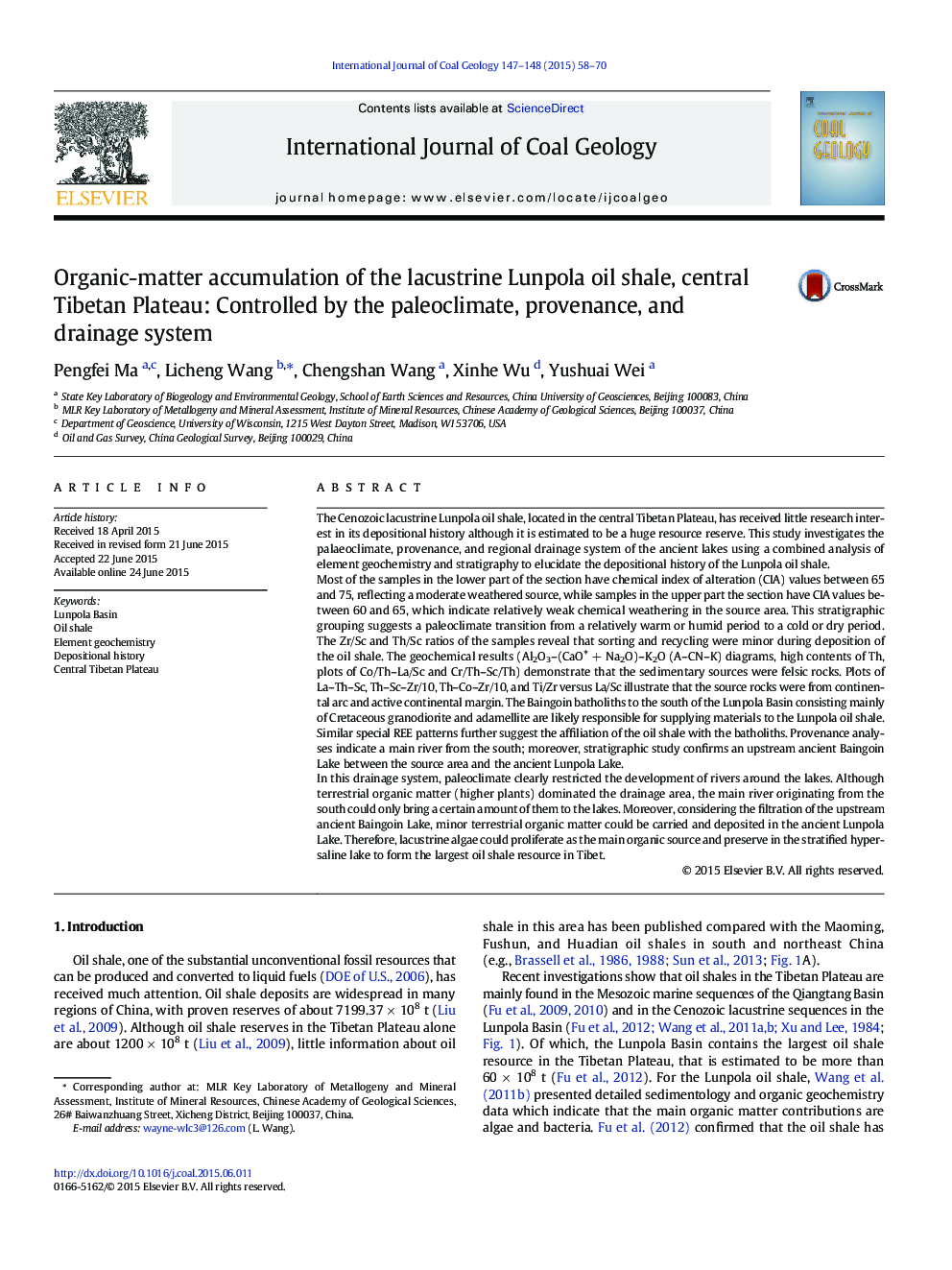| Article ID | Journal | Published Year | Pages | File Type |
|---|---|---|---|---|
| 1752937 | International Journal of Coal Geology | 2015 | 13 Pages |
Abstract
In this drainage system, paleoclimate clearly restricted the development of rivers around the lakes. Although terrestrial organic matter (higher plants) dominated the drainage area, the main river originating from the south could only bring a certain amount of them to the lakes. Moreover, considering the filtration of the upstream ancient Baingoin Lake, minor terrestrial organic matter could be carried and deposited in the ancient Lunpola Lake. Therefore, lacustrine algae could proliferate as the main organic source and preserve in the stratified hypersaline lake to form the largest oil shale resource in Tibet.
Related Topics
Physical Sciences and Engineering
Earth and Planetary Sciences
Economic Geology
Authors
Pengfei Ma, Licheng Wang, Chengshan Wang, Xinhe Wu, Yushuai Wei,
